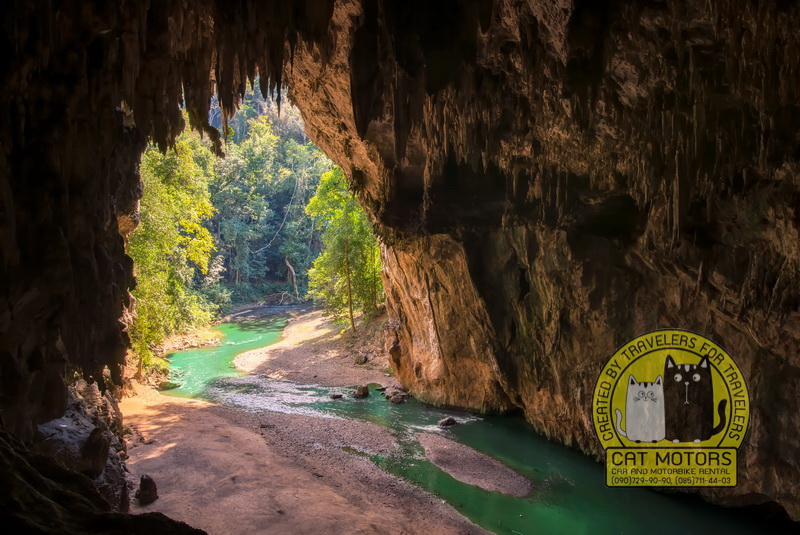In the Pang Ma Pha district located 67 km north of the Mae Hong Son province, a sweeping landscape with majestic mountains frames the region. The area is inhabited by hill tribes, such as Lisu and Lahu who also live among town people. One fascinating place is Lod Cave, a big cave through which the Lang River passes; tourists can enjoy visiting this cave in all seasons. However, they can also discover many more caves to explore: Pha Pueg, Pha Dang, Pang Kaam, Nam Tok, Susa, Pha Mon, Mae Lana, and Nam Bor Pee. Because it is difficult to reach these caves, the most adventurous spirits will enjoy this experience.
Tham Lod Cave Forest Park
In the Pang Ma Pha district some 77 km from Pai, nature created an exotic subterranean of darkness and mystery. A brook flows from the cave mouth to the other side of the mountain. To explore the 1 km-long cave of fragile stalactites and stalagmites, visitors may travel the route by foot or raft. Amateur archeologists will appreciate the 2,000-year-old remains of utensils found on the site. The Mae Lana Cave, most-suited for the daring traveler, is another in the Pang Ma district where stalactites and stalagmites await; the stream inside the cave is habitat to eyeless, colorless fish that live in its dark environment. Tourists may find local guides on Route 1095 with a turn onto Route 1226 to Ban Mae Lana.
Baan Bor Krai Home Stay
Lahu’s village―one of the hill tribes―located in Pang Ma Pha district area offers an overnight stay with the villagers. Tourists may immerse themselves in the Lahu’s lifestyle, culture, and also explore the surrounding nature: caves, forests, herbs, a variety of orchids, and various kinds of plants.
For more information, contact Baan Bor Krai tel. 053-619654.
Baan Mae Lana Home Stay
In this Shan village situated in Pang Ma Pha district, tourists can stay overnight with the villagers to experience their culture and lifestyle and explore the bountiful nature surrounding the village: farming, gardening, and Shan’s shows. Nature lovers can also trek, visit caves, gather herbs, bird watch, and behold exotic orchids and other indigenous plants.
Interested parties can request more information at Baan Mae Lana Tel. 053-619208 or the Culture and LifeStyle Restoration Project in the Mae Hong Son province at 053-613462-3.
Peeman Prehistoric Puzzle
Prehistoric humans lived in the many caves in the Mae Hong Son province. From the dwellings around the Pang Ma Pha district, archaeologists have uncovered traces of ancient humans. One of the most interesting artifacts is the Peeman coffin, as it is called by the local people. The long, narrow, wooden coffin is not over 50 centimeters tall and 2 meters wide; it did not hold an entire corpse.
The Peeman coffin puzzles archaeologists, who cannot pinpoint what era or for what objective ancient man constructed the coffin, and there is only little material evidence which makes drawing conclusions about the coffin difficult. However, archaeologists are excited about finding seeds, such as bottle gourd, cucumber, and yard-long bean seeds inside the cave. Carbon 14 testing reveals that the seeds are about 1,200 years old, which poses the possibility that this is one of the first places in the world where human beings knew how to cultivate.
Other uncovered artifacts― pottery and stone equipment― are dated between 4,000 and 8,000 years ago. Before that, traces of human habitance disappear.
